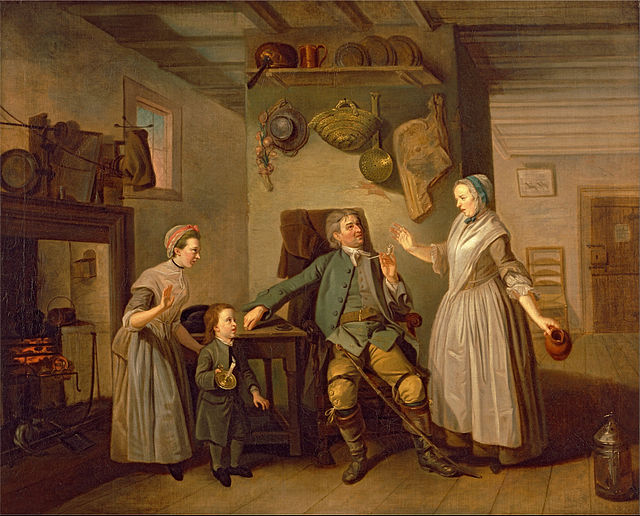A conversation piece refers to a group portrait in a domestic or landscape setting depicting persons chatting or otherwise socializing with each other. The persons depicted may be members of a family as well as friends, members of a society or hunt, or some other grouping who are shown sharing common activities such as hunts, meals, or musical parties. It was an especially popular genre in 18th-century England, beginning from the 1720s, largely due to the influence of William Hogarth. Similar paintings can also be found in other periods and outside of England. The setting of various figures "conversing" in an intimate setting appears to call for small-scale paintings, but some artists treated this subject manner in the Grand Manner, with almost life-size figures.
The Jones Family Conversation Piece, by William Hogarth, 1730.
David Garrick and Mary Bradshaw in David Garrick's "The Farmer's Return" by Johann Zoffany, 1762.
Family Group in a Garden by Arthur Devis, 1749.
William Hogarth was an English painter, engraver, pictorial satirist, social critic, editorial cartoonist and occasional writer on art. His work ranges from realistic portraiture to comic strip-like series of pictures called "modern moral subjects", and he is perhaps best known for his series A Harlot's Progress, A Rake's Progress and Marriage A-la-Mode. Knowledge of his work is so pervasive that satirical political illustrations in this style are often referred to as "Hogarthian".
William Hogarth, The Painter and his Pug, 1745. Self-portrait with his pug, Trump, in Tate Britain, London.
William Hogarth by Roubiliac, 1741, National Portrait Gallery, London
The Assembly at Wanstead House. Earl Tylney and family in foreground
Self-Portrait by Hogarth, ca. 1735, Yale Center for British Art.







